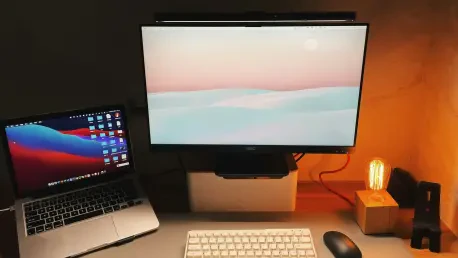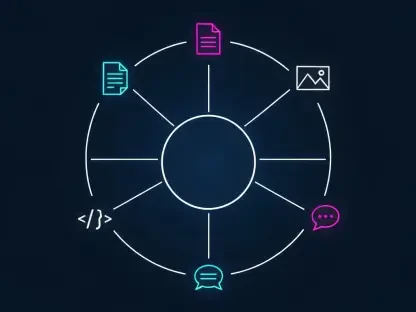As Google ventures into transforming Android into a desktop operating system, the tech giant faces a unique challenge: how to compete with entrenched players like Windows, macOS, and even ChromeOS. Although these established OSes dominate the market, Google aims to carve out a niche by leveraging advanced artificial intelligence and voice-first user interactions. Unlike other attempts to penetrate the desktop market, this revolutionary approach emphasizes an entirely new user experience that distinguishes itself through innovative features and enhanced capabilities.
Pioneering Voice-First Interactions
The Role of Google’s Gemini Assistant
Google’s strategy hinges on the integration of its powerful artificial intelligence tool, Gemini assistant, into the envisioned desktop OS. This move signifies a shift from traditional input methods toward an interaction paradigm where voice commands and AI-driven assistance take center stage. The Gemini assistant aims to provide intuitive and efficient support mechanisms, allowing users to control applications, browse the internet, and perform various tasks seamlessly. Without relying on hotwords, users will be able to search files, edit documents, and manage their workflows, thereby simplifying their interactions and enhancing productivity.
Incorporating these capabilities into desktop environments could result in a substantial transformation, particularly for users accustomed to conventional interfaces. Google’s approach suggests that the desktop could become a robust platform for productivity and creativity, driven by natural language processing and contextual understanding. The concept is not entirely new, as Google’s Android XR headsets have demonstrated some of these interactions. However, the desktop environment, with its superior computing power and battery life, presents an ideal stage for further development and adoption.
Contextual and Seamless Experience
The contextual intelligence of the Gemini assistant enables a more nuanced interaction level, where the assistant recognizes cues from the screen and responds meaningfully. Imagine users transcribing documents, issuing browse commands, or even generating creative content, all accomplished effortlessly through voice interaction. By delivering such capabilities, Google hopes to redefine how users engage with their desktop environment, fostering a more immersive and responsive experience.
While these aspirations are ambitious, the potential impact on productivity tools and everyday computing is enormous. For example, a user working on a complex report could benefit from the assistant’s ability to fetch relevant information, integrate data, or suggest edits without the need to switch between multiple applications. This harmonious blend of voice control and AI-driven insights aims to streamline tasks and reduce cognitive load, allowing for a more fluid and enjoyable user experience.
Challenges and Strategic Considerations
Overcoming Market Entrenchment
Despite the innovative potential, Google must navigate significant obstacles to gain traction in a market dominated by Windows and macOS. Chromebooks, despite their success in certain segments, illustrate the difficulty of establishing a new OS in a saturated space. Direct competition is unlikely to yield the desired results, primarily because of the consumer loyalty and ecosystem lock-in seen with existing desktop operating systems.
To tackle this, Google’s next-gen OS must offer compelling differentiation. The emphasis on AI and voice-first interaction serves as a unique selling point capable of attracting tech-savvy users and forward-thinking enterprises. By positioning itself as a pioneer in this space, Google targets users seeking cutting-edge technology in their computing experience.
Transitioning Features from ChromeOS to Desktop Android
A crucial step in Google’s strategy involves integrating features from ChromeOS into the new desktop Android. ChromeOS has long been the testbed for innovative web-based applications and cloud-first capabilities. Bringing these features into a cohesive Android-based desktop environment could bridge the gap between mobile convenience and desktop robustness.
The upcoming transitions hint at a potential shift, although not explicitly stated, through ChromeOS’s adoption of Android elements. This blend of features promises to create an ecosystem where the lines between different device categories blur, providing users with a versatile and consistent experience across their devices. In doing so, Google hopes to build on Android’s extensive app ecosystem while incorporating desktop-worthy functionalities.
Future Prospects for Android as a Desktop OS
AI-Driven Evolution and Market Impact
Google’s unveiling at the recent I/O event underscored its commitment to reimagining Android with AI at the core. This renewed focus aligns with broader industry trends where smart assistants and contextual computing are becoming integral to user experience. By harnessing these advancements, Google aspires to create a desktop OS that appeals to a diverse user base, from individual consumers to enterprise professionals.
The desktop operating system landscape could witness significant disruptions as AI-driven features reshape user expectations and workflows. For Google, succeeding in this endeavor means not only aligning technological capabilities with market needs but also fostering partnerships with hardware manufacturers, software developers, and enterprise clients. Such collaborations are essential to achieve widespread adoption and to fine-tune the OS for varied usage scenarios.
Steps Ahead and Long-term Vision
Looking ahead, the path for Google involves continuous refinement and innovation within this nascent landscape. Introducing AI and voice-first interactions on desktops paves the way for broader application across other device categories, including laptops, tablets, and beyond. The ultimate goal is a unified experience across platforms, where transition between devices becomes seamless and intuitive, guided by the underlying AI.
The success of this initiative will depend largely on user reception, ongoing research, and development investments in AI technology, and strategic marketing to highlight the benefits of this new interaction model. While challenges remain, the vision of a more intelligent, voice-first desktop OS represents an exciting frontier in computer technology.
What Lies Ahead for Google’s Desktop Ambitions?
As Google embarks on the ambitious project of transforming Android into a desktop operating system, it encounters a significant hurdle: competing with well-established players such as Windows, macOS, and its own ChromeOS. These operating systems have long dominated the desktop market, commanding loyal user bases and robust ecosystems. Despite this, Google is determined to forge a unique path by exploiting its prowess in artificial intelligence and prioritizing voice-first user interactions.
This strategic move from Google signals a shift from traditional approaches to desktop OS development. By focusing on AI integration and voice commands, Google aims to offer users an entirely novel experience. Such innovations could potentially revolutionize how we interact with desktop computers, setting Android apart from its competitors.
Moreover, this initiative underscores Google’s intent to not merely imitate but innovate. As they pursue this vision, the goal is to attract users seeking cutting-edge functionality and seamless interaction. While the path ahead is filled with challenges, Google’s bold approach promises a fresh and compelling alternative in the desktop OS landscape.









